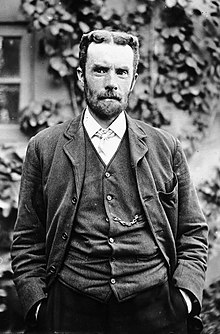Oliver Heaviside | |
|---|---|
 Heaviside, c. 1900 | |
| Born | 18 May 1850 |
| Died | 3 February 1925 (aged 74) |
| Known for | |
| Awards | FRS (1891)[1] Faraday Medal (1922) |
| Scientific career | |
| Fields | Mathematics Physics |
| Institutions | Great Northern Telegraph Company |
Oliver Heaviside FRS[1] (/ˈhɛvisaɪd/; 18 May 1850 – 3 February 1925) was an English self-taught mathematician and physicist who invented a new technique for solving differential equations (equivalent to the Laplace transform), independently developed vector calculus, and rewrote Maxwell's equations in the form commonly used today. He significantly shaped the way Maxwell's equations are understood and applied in the decades following Maxwell's death. His formulation of the telegrapher's equations became commercially important during his own lifetime, after their significance went unremarked for a long while, as few others were versed at the time in his novel methodology.[2] Although at odds with the scientific establishment for most of his life, Heaviside changed the face of telecommunications, mathematics, and science.[2]
- ^ a b Anon (1926). "Obituary Notices of Fellows Deceased: Rudolph Messel, Frederick Thomas Trouton, John Venn, John Young Buchanan, Oliver Heaviside, Andrew Gray". Proceedings of the Royal Society A: Mathematical, Physical and Engineering Sciences. 110 (756): i–v. Bibcode:1926RSPSA.110D...1.. doi:10.1098/rspa.1926.0036.
- ^ a b Hunt, B. J. (2012). "Oliver Heaviside: A first-rate oddity". Physics Today. 65 (11): 48–54. Bibcode:2012PhT....65k..48H. doi:10.1063/PT.3.1788.